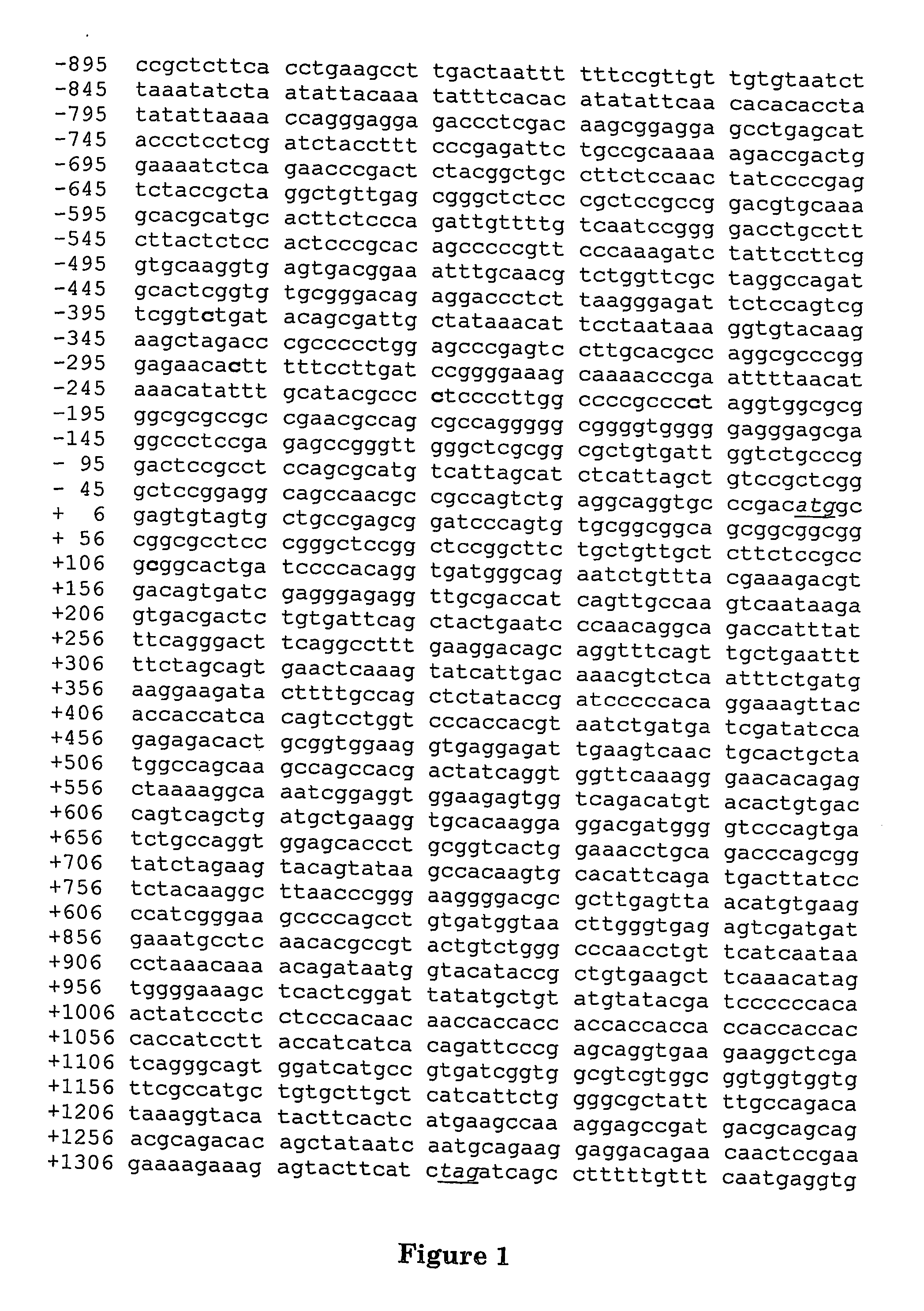Detection of hpv-induced invasive cancers and their precursor lesions with invasive potential
- Summary
- Abstract
- Description
- Claims
- Application Information
AI Technical Summary
Benefits of technology
Problems solved by technology
Method used
Image
Examples
example 1a
Frequent TSLC1 Silencing in Cervical Carcinoma Cell Lines
[0082] TSLC1 mRNA expression levels were measured in normal cervical epithelial cells that were derived from biopsy samples, cervical smears and 11 cervical carcinoma cell lines that contained high-risk HPV DNA. The mRNA levels were measured by real time quantitative RT-PCR using Lightcycler technology (Roche) and compared with normal primary keratinocytes. In normal cervical epithelial cells, the TSLC1 mRNA levels were comparable to those observed in primary keratinocytes. By contrast, TSLC1 mRNA was undetectable in 7 of the 11 cell lines and severely reduced in another 3 cell lines, showing that TSLC1 downregulation is apparent in 91% (10 / 11) of cervical carcinoma cell lines analysed.
[0083] On the other hand, TSLC1 expression was still abundant in HPV-immortalized cells. These HPV-immortalized cells are not yet tumorigenic and have previously been shown to be representative of premalignant cervical lesions in vivo.
[0084] ...
example 1b
Role of Methylation in TSLC1 Silencing in Cervical Cancer Cells
[0085] To assess whether a methylating event was underlying TSLC1 silencing in cervical cancer cells, the cell lines SiHa, HeLa and CaSki were treated with the methylation inhibitor 5-aza-2′-deoxycytidine. TSLC1 mRNA levels were compared to expression levels in primary epithelial cells, which was set to a 100%. Upon 5 to 7 days of incubation with 5-aza-2′-deoxycytidine TSLC1 expression levels were upregulated from 0% to 26% in SiHa, and from 4% to 70% and 0% to 33% in HeLa and CaSki cells, respectively. These data indicate that in all these 3 cell lines TSLC1 downregulation results, at least in part, from a methylating event.
[0086] Next, TSLC1 promoter methylation by radioactive bisulfite sequencing was studied. It was found that all 6 CpG sites sequenced were methylated in 9 / 11 cervical cancer cell lines. Except for three cell lines, no wild type sequences were detected in these cell lines, indicating that TSLC1 promo...
example 1c
Role of a Chromosomal Deletion in TSLC1 Silencing
[0087] To analyse whether a chromosomal deletion attributed to TSLC1 silencing loss of heterozygosity (LOH) analysis was performed using 8 polymorphic markers flanking the TSLC1 gene. Normal DNA derived from either lymphoblasts or fibroblasts of 8 cervical carcinoma cell lines was available. In 3 (38%) of these cell lines an allelic loss at 11q23.2 was apparent. All 3 cell lines revealed TSLC1 promoter hypermethylation and absence of detectable TSLC1 mRNA, suggesting that allelic deletion combined with promoter hypermethylation underlied complete gene silencing.
[0088] Analysis on the HPV immortalized cell lines showed an LOH at 11q23.2 in all immortal passages of one of the four cell lines. However, TSLC1 expression was still detectable in these passages and no promoter methylation was found, indicating that the retained allele is still actively transcribed. No allelic loss at 11q23 was detected in the other three cell lines.
[0089]...
PUM
| Property | Measurement | Unit |
|---|---|---|
| Fraction | aaaaa | aaaaa |
| Sensitivity | aaaaa | aaaaa |
Abstract
Description
Claims
Application Information
 Login to View More
Login to View More - R&D
- Intellectual Property
- Life Sciences
- Materials
- Tech Scout
- Unparalleled Data Quality
- Higher Quality Content
- 60% Fewer Hallucinations
Browse by: Latest US Patents, China's latest patents, Technical Efficacy Thesaurus, Application Domain, Technology Topic, Popular Technical Reports.
© 2025 PatSnap. All rights reserved.Legal|Privacy policy|Modern Slavery Act Transparency Statement|Sitemap|About US| Contact US: help@patsnap.com


